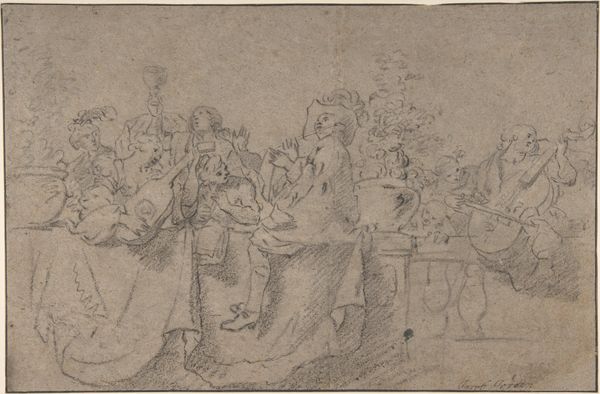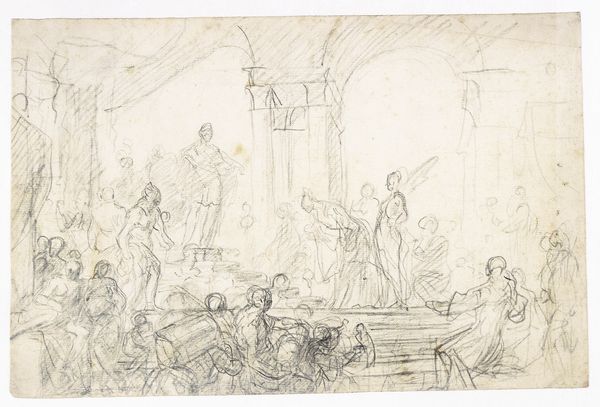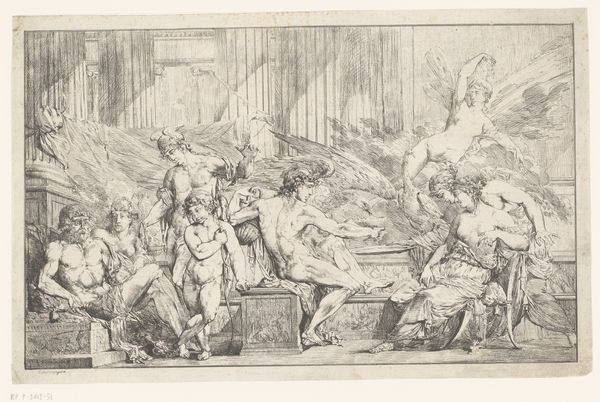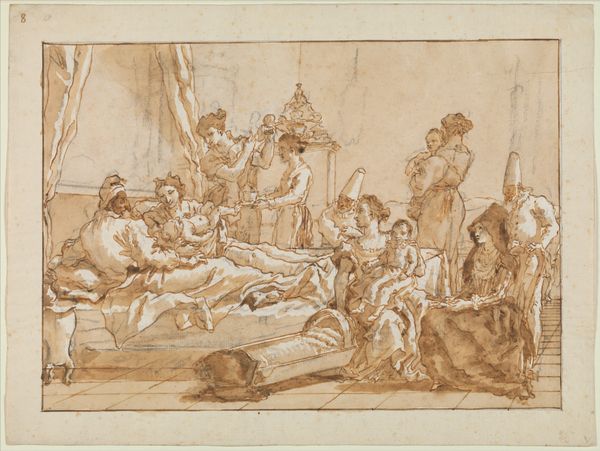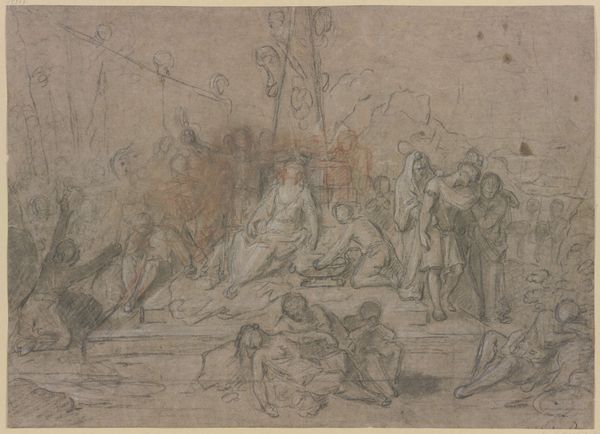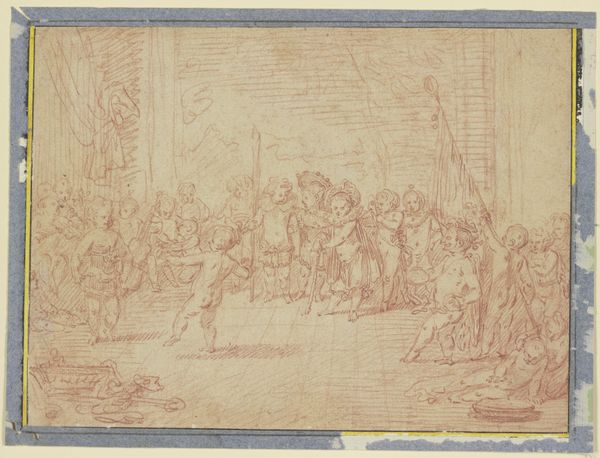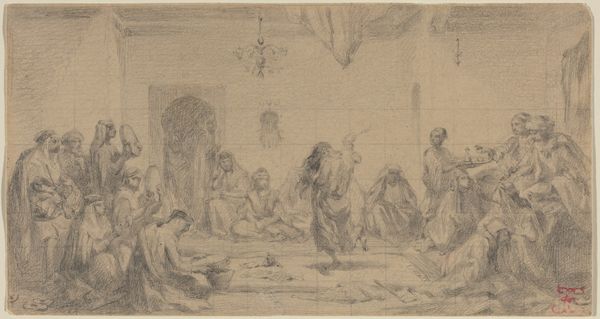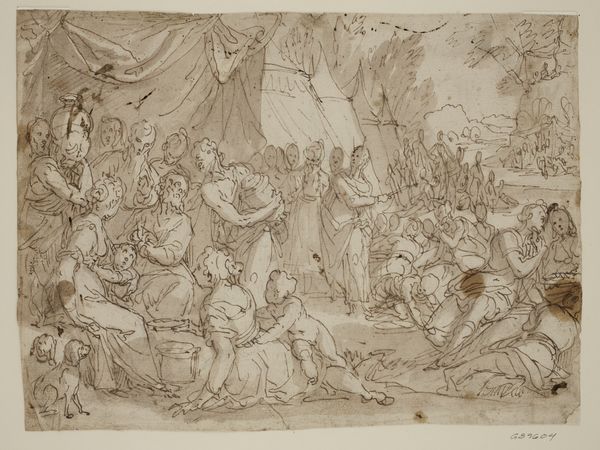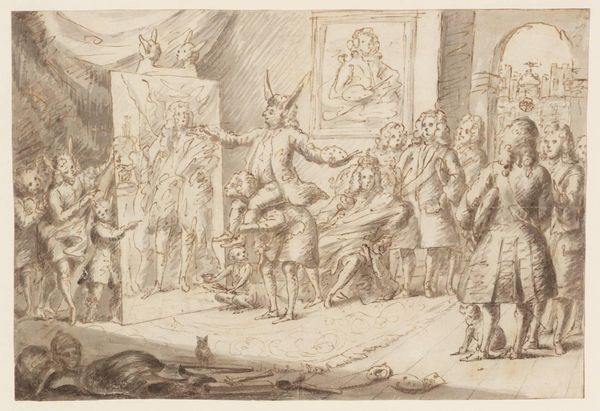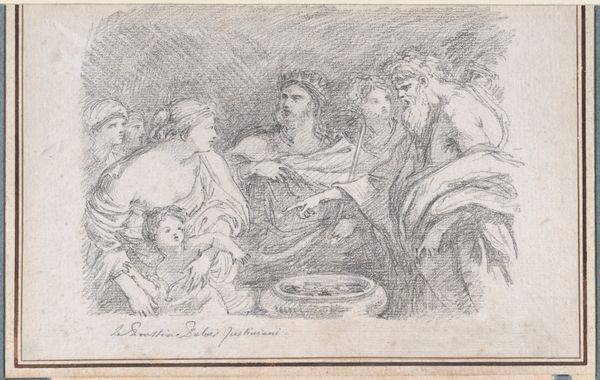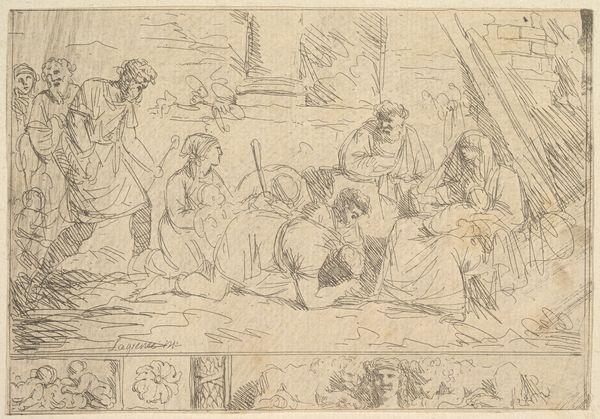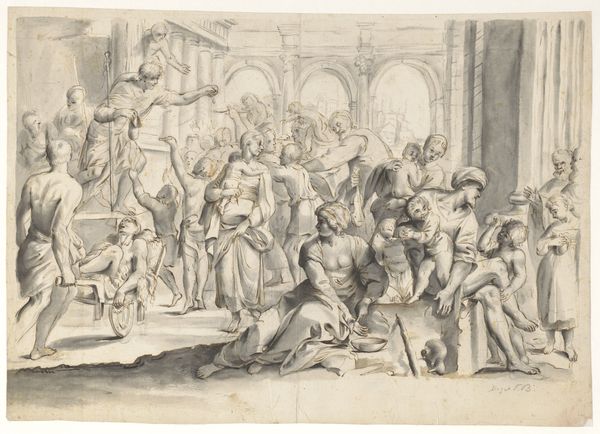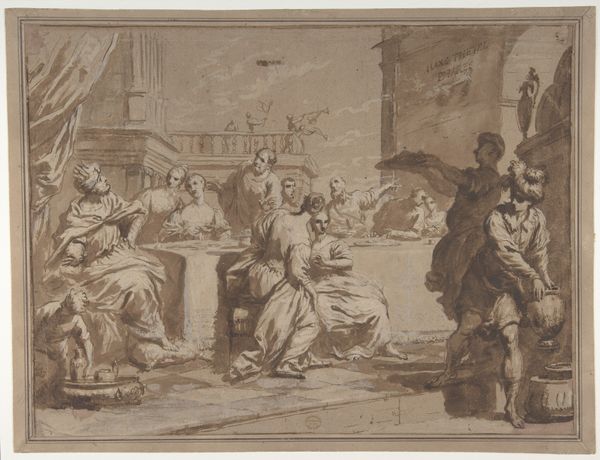
drawing, print
#
drawing
#
toned paper
#
light pencil work
# print
#
pen sketch
#
pencil sketch
#
circle
#
personal sketchbook
#
ink drawing experimentation
#
pen-ink sketch
#
men
#
sketchbook drawing
#
storyboard and sketchbook work
#
sketchbook art
Dimensions: sheet: 16 3/16 x 18 15/16 in. (41.1 x 48.1 cm)
Copyright: Public Domain
Curator: Francois Boucher's "Mucius Scaevola Before King Porsenna," likely created between 1715 and 1770, depicts a tense scene rendered with delicate lines in a graphite sketch. Editor: The scene has an incredible rawness, as if we are peering into an immediate moment of confrontation. The frenetic pencilwork heightens that sense of dramatic urgency, no? Curator: Indeed. Boucher’s composition invites the eye to consider contrasting diagonals – the supplicant figure prostrate on the left versus the rigid bearing of King Porsenna, elevated on a throne-like dais to the right. The effect is an unstable balance. Editor: This reminds me of contemporary standoffs between activists and authoritative bodies, as well as the many layers of power being explored here, namely civic duty, nationalism, class, and gender expectations within those arenas. What sort of symbolic meaning might we extract from these stark contrasts, these unequal relationships? Curator: One could interpret the scene as a meditation on moral fortitude versus raw power. Notice how the circular form above the man suggests an otherworldly force observing the central action of the story. Editor: I read the supplicant Mucius' act as an individual's defiance of oppressive rule. Is this a cry for liberation, then? Or is the man just a pawn in some high-stakes political play we’re not privy to? Curator: Perhaps both are valid perspectives. What strikes me about the composition is Boucher's sophisticated rendering of depth through very delicate variations in line weight. Editor: Absolutely. This art piece can prompt us to consider various conflicts between human agents within their societies. As modern-day peoples we still see echoes of them on multiple platforms across our communities, from global newsfeeds to neighborhood disputes, for instance. Curator: I agree; viewing such works across historical contexts provides continuous lessons. It reveals something powerful about shared visual vocabulary across space and time.
Comments
No comments
Be the first to comment and join the conversation on the ultimate creative platform.
